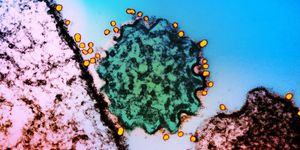The Softer Side of the BNST: from social anxiety to quiet companionship
Deep within the brains of rodents and primates is an area where emotional responses and surveillance information collide. The bed nucleus of the stria terminalis or BNST is thought to play a role in many psychiatric disorders such as aggression, anti-social behavior, PTSD, and anxiety. However, new research has discovered a softer side to the BNST.
In a recent paper published in the Journal of Neuroscience, researchers at Georgetown University hypothesized that deactivating the BNST would lead to more friendly social interaction in their rhesus macaque subjects.
Ludise Malkova, Professor of Pharmacology & Physiology and one of the two primary authors of this work, explains that unlike previous work on the BNST they “deliberately use a task that avoids anxiety, because our main interest is in the networks supporting social behavior.”
Previous research on BNST has looked at its role in social anxiety. This makes sense as the BNST mediates hypervigilance about our physical and social world and anticipating events in unpredictable situations.
The researchers Jacobs et al. infused micro amounts of the drug muscimol into the BNST of macaques to ramp up the activity of GABA neurons. Because GABA neurons inhibit the neurons they connect with, this blunted the activity of BNST’s excitatory neurons. Then, the behavior of subject animals with cage mates was monitored for social and non-social activities.
Silencing the hypervigilant BNST with muscimol physically slowed down the subject’s movements and increased their social engagement. The treated macaques spent more time grooming and sitting passively with their non-human primate roommate.
These findings expose how BNST affects social behavior outside of its relationship with anxiety. “Our experiment is the first to test a causal role of the BNST in dyadic interactions among monkeys,” said Malkova.
Where previous research was primarily in rodents, this research places the BNST into a network of primate brain regions that interact to encourage positive social interactions.
We now know two sides of the BNST; deactivation of this region doesn’t just alleviate anti-social tendencies but generates affiliative behavior.
Sources: Personal Correspondence with Authors, Journal of Neuroscience, Molecular Psychiatry, Depression and Anxiety









